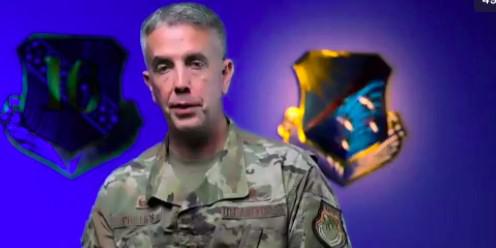Cyber Gunslingers Defend Key Military and National Assets
The U.S. Air Force’s 67th Cyberspace Wing has been busy. The wing operationally acts as the execution arm of Air Forces Cyber, performing comprehensive cyber operations on a service and nation level. The wing has successfully proven its ability to operationalize on top of its duties to organize, train and equip, reported Col. Jeffrey Phillips, USAF, wing commander. The wing took action against Russia’s information warfare campaign over the last year, responded to the SolarWinds compromise and helped ensure the digital security of the 2020 election, Col. Phillips said during a May 18 presentation to the AFCEA Alamo Chapter.
To support an expanded cyber mission, the wing has grown from three to four groups, and “all four play a critical role in what we do every day,” the commander said. The Wing’s 67th Cyberspace Operations Group engages adversaries, conducting offensive cyberspace operations in so-called red space. As the defensive cyber operations group, the 567th Cyberspace Operations Group provides the daily defense of Air Force and mission partner weapons systems from cyber attacks. The 318th Cyber Operations Group provides mission support to the entire wing by providing training capabilities, development, testing, range support and exercises.
The 867th Cyberspace Operations Group conducts both offensive and defensive cyber operations; however, the group is “uniquely aligned” under the Cyber National Mission Force, helps support U.S. Cyber Command and is located at Fort Meade, Maryland. “Ultimately, their goal is to protect the nation,” Col. Phillips explained. “They have national level teams on both the offensive and defensive side.”
The wing’s units are stationed at nine locations, including: Hickam Air Force Base, Hawaii; Nellis Air Force Base, Nevada; Joint Base San Antonio-Lackland, Texas; Hurlburt Field, Florida; Fort Gordon, Georgia; Fort Meade, Maryland; a small detachment located in Reston, Virginia; a new detachment at Keesler Air Force Base, Mississippi, and the wing headquarters at Scott Air Force Base, Illinois.
The wing is continuing to evolve its structure. It recently added the Joint Reserve Intelligence Center, which has proven to be “a valuable partner already,” the colonel offered. In addition, as the wing has only one operational support squadron (OSS) that works to aid all of the operations groups, leaders are examining how to structure the squadron. “The flying model there would be an OSS aligned per operation, but we're exploring what that might look like for us,” he clarified. “Right now, we don't feel that we have enough manpower to break that up into four separate support functions for each of the groups.”
The move last fall of 600 intelligence airmen from the 70th Intelligence, Surveillance and Renaissance Wing to the 67th Cyberspace Wing has created a “unity of command” for its operations, the colonel reported. The wing is concentrating on growing to 500 its cadre of so-called 14F Airmen that have taken the Initial Skills Training (IST) course for an information operations specialty. “Right now, there is only about 130 of these airmen in the Air Force, but they are definitely a high-demand, low-density asset, so that we want to get them trained and get them out into the field operating as soon as possible,” Col. Phillips confirmed.
To take some of the training burden off of its operational units, the service set up a detachment a few months ago at Keesler Air Force Base to provide focused cybersecurity and defensive training. “Now those units can focus on operations and not having to worry about getting their airmen trained while conducting operations, so we're pretty excited about that,” the commander shared. The wing also is getting ready to integrate 30 of its airmen into the Air Force’s Level Up software factory in San Antonio, to explore the concept of software factory-as-a-service.
In addition, to fill a more immediate need to prepare airmen for information operations, the wing also added an Information Operations Initial Skills course for lieutenants, recently graduated the first class, and is currently conducting the second course, Col. Phillips noted. The wing plans to be able to offer two to three Information Operations Initial Skills courses per year.
“We think eventually this is a course that we will pass off to the Air Education and Training Command as they are the lead for all the other initial skills training courses in the Air Force,” he said. “But we wanted to get something off the ground sooner rather than later so we could start training these airmen. A lot of these airmen are trained as behavioral scientists or experts in military information support operations, or military deception operations or psychological operations. We needed to give them the right formal training so we could bring all those functions together and be able to take them out to the field to influence operations. And so we've been successful at doing that.”





Comments